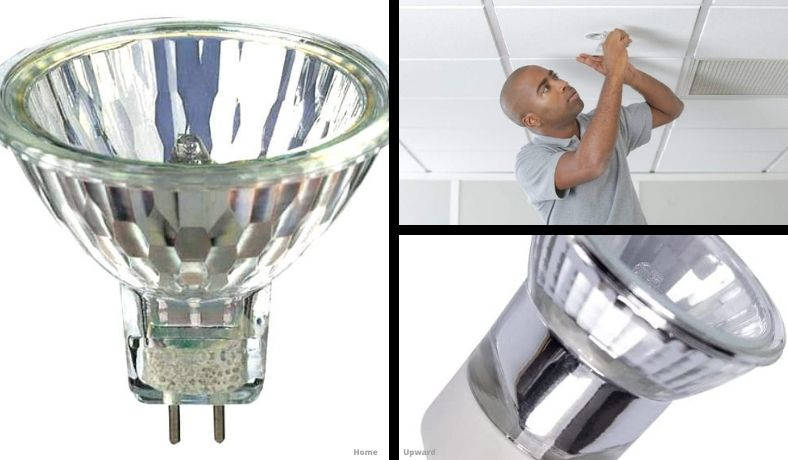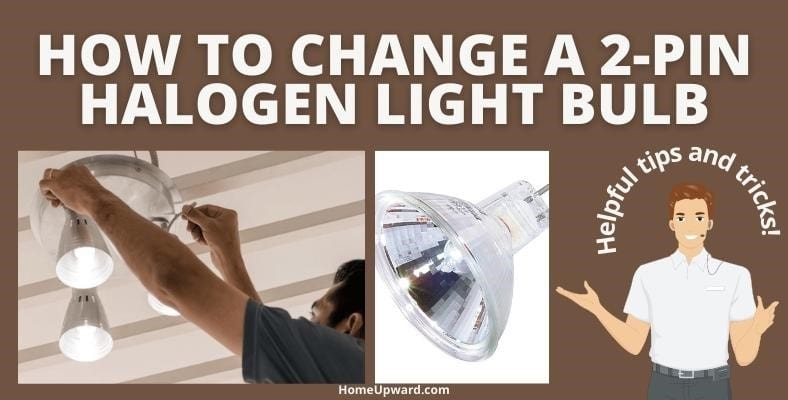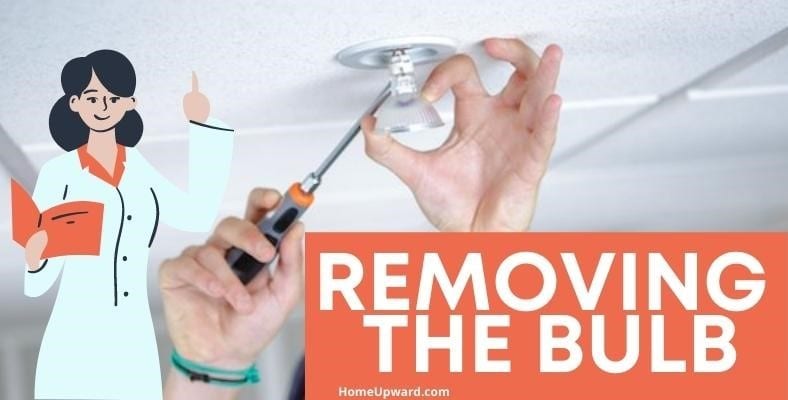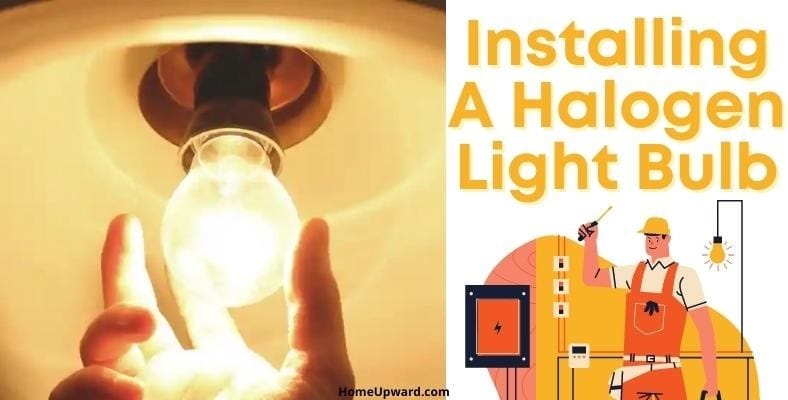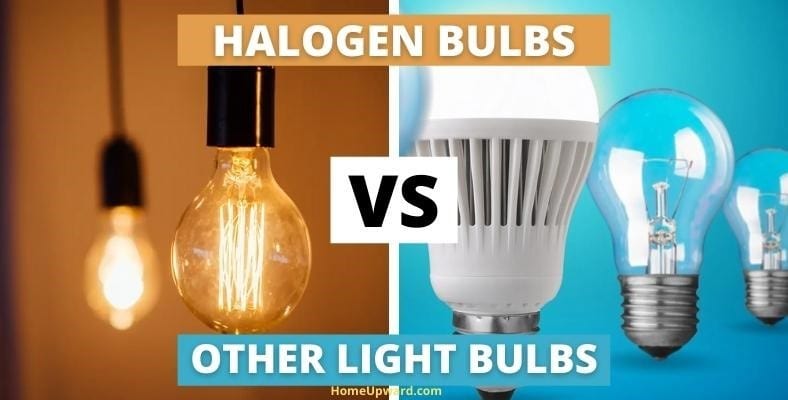Having a burnt light bulb only to discover you have no idea how to replace it can be annoying. Halogen 2 pin light bulbs come with a unique challenge due to the different ways you install or remove them. Here is an easy, step-by-step guide on how to replace a halogen light bulb with a prong base.
I’ll also cover why you should consider keeping your halogen light bulbs instead of replacing them with LEDs.
Contents
Getting started: How to change a 2-pin halogen light bulb
A 2 pin halogen light bulb is a type of halogen bulb with two small pins that bulge out from the base of the light bulb. These bi-pin bulbs (or a light bulb with 2 prongs) need a different way to replace them than a traditional bulb or LED.
Before you begin to replace your halogen bulb, however, let’s review what a halogen bulb is and precautions to take when replacing it.
What is a halogen light bulb?
Halogen bulbs are a type of incandescent light bulb that uses gas to create light. Halogens are known for their long lifespan and higher levels of lighting (as well as their light quality, too).
These types of bulbs have filaments inside in a small capsule, usually made of quartz. The glass-inside-glass setup gives them a “light inside a light” look. Within this capsule the halogen cycle occurs; tungsten particles from the filament are burnt off by the electrical flow and redeposited back onto it.
Halogen light bulbs have longer lifespans than their incandescent counterparts – 2,500 hours for a halogen bulb, whereas the average incandescent (traditional) bulb averages around 800. The tradeoff for this extra life is that halogen lights operate at a significantly higher temperature. (Have you ever burnt your fingers trying to unscrew an old light bulb from an old lamp? It was most likely a halogen bulb!)
1. How to remove halogen lights
Before you begin your 2 pin halogen bulb replacement, make sure you turn the switch off, and the power has been shut off at the breaker box. If you can, give the halogen bulb time to cool off. Halogen bulbs produce a large amount of heat, and the longer the bulb was in use, the hotter it will be.
If you’re not sure if it is cool enough, give it a bit more time. When handling halogen bulbs, always use a pair of protective gloves. Not only will wearing gloves protect you from potential heat-related injuries but it will also protect the bulb from the oil or sweat on your hands which can cause “hot spots” on it.
Removing the bulb
Due to the 2 pin halogen design, you’ll need to remove the bulb a bit differently than you may be used to.
Gently push the bulb in or towards the base then rotate it to the right – usually about 90 degrees. If the socket is a straight connection, you may be able to simply pull the bulb out. Some sockets will have a small lip or piece of metal that works as a clasp – push down on the clip while pulling outwards on the bulb.
Some bulbs will feel like they “pop” out of place, but most will just stop turning. Gently pull the halogen bulb out of the socket – if it feels a bit tight, you can try to give it a bit of a wiggle as you remove it.
Place the bulb somewhere securely – remember, if it’s very hot it can burn you or whatever you lay it on. Take note of the type of halogen bulb you just removed, as it will be essential to replace it with a halogen bulb that has the exact watt, volt, and prong fitting.
2. How to install a halogen light bulb
Before you install a new halogen light bulb, make sure that the light switch is off.
Next, put on a pair of protective gloves. It is crucial to glove up before taking the bulb out of the packaging, as the natural oils from your skin could damage the bulb.
For bulbs with traditional socket settings, check the socket that the bulb will be placed in. You will see two grooves that look similar to a semi-colon; a broader hole on one side flows into a narrower track.
Make sure that you line up the prongs with the larger holes. The bulb will fit easily into the holes. (If it doesn’t, then take the bulb out and make sure you have aligned the prongs with the receiving socket properly.)
Then, rotate the bulb clock-wise approximately 90 degrees. It should smoothly twist into place, creating a tight connection.
For bulbs with straight socket connections, you will be able to push the new bulb into place gently. It should be secure – do not force it, as you risk the chance of shattering the bulb or damaging the prongs.
Sockets with clip connectors are the easiest to replace. Gently push the bulb into the socket until it “clicks” into place. The clasp or clip will click into place, securing your 2 pin halogen light bulb.
Why choose halogen bulbs over other light bulbs?
Halogen light bulbs offer a unique light output and temperature of color. You really should consider a halogen bulb replacement for your outdated or blue-light bulbs if you’re looking to create a more homey atmosphere in your home.
The light they produce is somewhat closer to natural daylight and can make colors “pop” as well as give your home’s interior a more comfortable feel.
Benefits of using halogen bulbs
Halogen bulbs provide a better quality of overall light – they even have a 100 on the CRI scale!
(CRI is the color rendering index, which measures how well a light source lights an object, but still maintain its actual, natural color. The higher to 100 a light source is, the more accurate the colors of the items it lightens. Many LEDs come in at about 80 CRI.)
Additionally, halogens will maintain about 95% of their lumen output over their lifespan – which is better than the 70% LED bulbs boast.
Halogen bulbs come in many different sizes, and because some are so tiny, they’re perfect for places that need light. Power tools, appliances, and projectors often utilize halogen bulbs – many cars used halogen bulbs in their headlamps!
In areas you want to be able to dim your light bulbs, halogens are an excellent choice. Halogens can be dimmed over and over without fear of burn out.
For anyone looking for low-cost lighting options, halogens have become the answer. Unlike many other traditional bulbs that are being phased-out, they’re not, making them an easy go-to for cheaper lighting.
What are the best ways to use halogen light bulbs?
Halogen bulbs are an excellent choice for use within your home. The color temperature can make the decor in your home better than a LED bulb.
- Jewelry boxes or cases in stores and galleries often use halogen lights within their displays. When reflected off a mirror, halogen light gives gold jewelry a warner, richer, and higher-class tone.
- Retail stores that are dimmer and going for a warm vibe often use halogen bulbs in their track lighting. (Think PacSun or Hollister, where there aren’t bright fluorescents illuminating the store.)
- Niche applications like portable projects are also a great way to use a halogen bulb. Their long lifespans and the fact that they are dependable mean you won’t have to worry about replacing the bulb for a long time.

